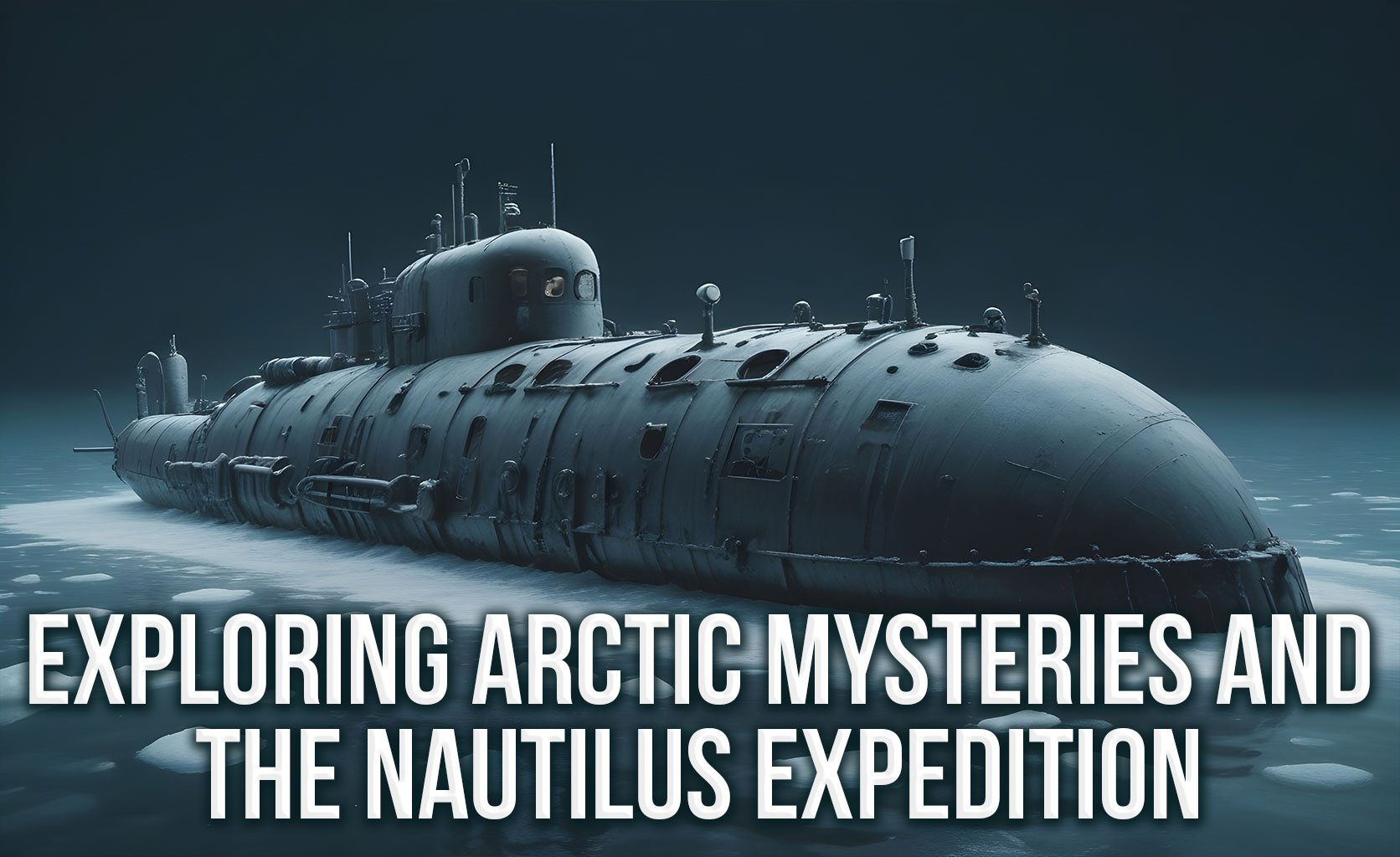The Arctic has long fascinated explorers with its icy landscapes and challenging conditions. The quest to conquer the Arctic has inspired bold journeys and visionary expeditions. Among them, the Nautilus expedition stands out for its ambition to traverse the treacherous Arctic waters using a submarine. This article delves into the story of the Nautilus expedition, led by Sir Hubert Wilkins, and the challenges faced by those who dared to explore the Arctic’s mysteries.
I. Introduction
The Nautilus expedition represents a pivotal moment in Arctic exploration history. Sir Hubert Wilkins’s vision to navigate the Arctic Ocean using a submarine was groundbreaking. It promised new possibilities for reaching the North Pole and uncovering the secrets of one of the most remote and unexplored regions on Earth.
II. Setting the Stage: Arctic Exploration before the Nautilus
Before the Nautilus expedition, Arctic exploration had a storied history marked by courage and adversity. Early explorers faced formidable challenges such as extreme cold, shifting ice floes, and the difficulty of traversing vast distances on foot or by ship.
The North Pole had long been a target of explorers, with numerous expeditions attempting to reach it. The first undisputed discovery of the North Pole occurred in 1926 when American aviator Richard E. Byrd and Norwegian explorer Roald Amundsen flew over the pole in an airship.
Despite such achievements, exploring the Arctic remained a daunting endeavor, particularly due to the harsh conditions and the vast, frozen expanse of the Arctic Ocean.
III. Sir Hubert Wilkins and the Vision for the Nautilus Expedition
Sir Hubert Wilkins, an Australian-born explorer and adventurer, believed that submarines offered a unique advantage for Arctic exploration. Their ability to navigate beneath the ice would provide unparalleled access to areas otherwise unreachable by traditional ships.
Wilkins’s vision was bold: to reach the North Pole and explore the Arctic Ocean’s hidden depths using a submarine. He believed this approach would allow for more efficient and less perilous journeys compared to surface travel.
IV. The Design and Modifications of the Nautilus
To realize his vision, Wilkins acquired a decommissioned U.S. Navy submarine, the USS O-12, and enlisted the help of renowned naval architect Simon Lake. Lake was tasked with modifying the submarine to withstand the harsh Arctic conditions.
The modifications included strengthening the hull to endure the immense pressure of navigating under the ice and enhancing the vessel’s buoyancy to manage potential difficulties. Additionally, the submarine was equipped with specialized equipment for Arctic navigation, such as sonar and navigation aids.
V. The Troubled Journey: Challenges and Setbacks
Despite the careful preparations, the Nautilus expedition faced numerous challenges. The mechanical issues with the submarine became apparent early on, causing delays and complications during the journey. Adverse weather conditions added to the difficulties, making the expedition more arduous.
The crew also experienced health concerns due to the harsh environment and the stress of the journey. These challenges tested the resolve of Wilkins and his team as they struggled to maintain progress.
VI. The Decision to Press Onward
Despite the setbacks, Wilkins remained determined to press onward with the expedition. He faced immense pressure from financial backers, who expected results, as well as from the media, which closely followed the expedition’s progress.
Wilkins’s resilience and commitment to his vision kept the expedition going, even in the face of mounting obstacles. His leadership inspired his crew to continue pushing forward despite the difficulties.
VII. The Failed Attempt and Legacy of the Nautilus Expedition
Ultimately, the Nautilus expedition did not achieve its goal of reaching the North Pole. The challenges proved insurmountable, and the submarine was unable to complete its journey as planned.
The expedition’s failure had significant repercussions for Wilkins. Financially ruined, he faced criticism and doubt from some quarters. However, his efforts were also celebrated by others for his innovative approach and daring spirit.
The Nautilus itself eventually sank in 1931 during a voyage off the coast of Norway, marking the end of its storied career.
VIII. Conclusion: Reflecting on Wilkins’s Legacy and the Spirit of Exploration
Despite the failure of the Nautilus expedition, Sir Hubert Wilkins’s vision and determination embody the enduring spirit of exploration. His willingness to take risks and pursue bold ideas laid the groundwork for future innovations in Arctic exploration.
Wilkins’s legacy serves as a reminder of the challenges and rewards of pushing the boundaries of human knowledge. His journey is a testament to the indomitable human spirit that drives us to explore the unknown and seek new horizons.
FAQs
- What was the Nautilus expedition?
- The Nautilus expedition was an ambitious journey led by Sir Hubert Wilkins to navigate the Arctic Ocean using a submarine. The goal was to reach the North Pole and explore the Arctic’s mysteries.
- Why did Wilkins choose a submarine for Arctic exploration?
- Wilkins believed that submarines offered a unique advantage for Arctic exploration due to their ability to navigate beneath the ice, providing access to areas otherwise unreachable by traditional ships.
- What challenges did the Nautilus expedition face?
- The expedition faced numerous challenges, including mechanical issues with the submarine, adverse weather conditions, health concerns among the crew, and financial and media pressure.
- Did the Nautilus expedition reach the North Pole?
- No, the expedition ultimately did not reach the North Pole due to the challenges it faced during the journey.
- What is the legacy of Sir Hubert Wilkins and the Nautilus expedition?
- Although the expedition did not achieve its goals, Sir Hubert Wilkins’s vision and determination embodied the spirit of exploration. His innovative approach laid the groundwork for future advancements in Arctic exploration.

